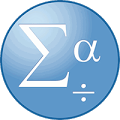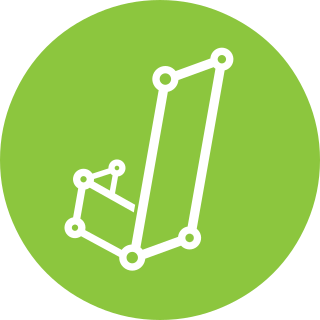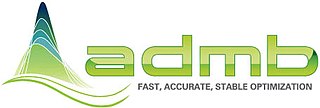
SPSS Statistics is a software package used for interactive, or batched, statistical analysis. Long produced by SPSS Inc., it was acquired by IBM in 2009. The current versions (2015) are named IBM SPSS Statistics.

R is a programming language and free software environment for statistical computing and graphics supported by the R Foundation for Statistical Computing. The R language is widely used among statisticians and data miners for developing statistical software and data analysis. Polls, data mining surveys, and studies of scholarly literature databases show substantial increases in popularity; as of July 2019, R ranks 20th in the TIOBE index, a measure of popularity of programming languages.

gretl is an open-source statistical package, mainly for econometrics. The name is an acronym for GnuRegression, Econometrics and Time-seriesLibrary.
S-PLUS is a commercial implementation of the S programming language sold by TIBCO Software Inc.
EViews is a statistical package for Windows, used mainly for time-series oriented econometric analysis. It is developed by Quantitative Micro Software (QMS), now a part of IHS. Version 1.0 was released in March 1994, and replaced MicroTSP. The TSP software and programming language had been originally developed by Robert Hall in 1965. The current version of EViews is 11, released in April 2019.
RATS, an abbreviation of Regression Analysis of Time Series, is a statistical package for time series analysis and econometrics. RATS is developed and sold by Estima, Inc., located in Evanston, IL.

Origin is a proprietary computer program for interactive scientific graphing and data analysis. It is produced by OriginLab Corporation, and runs on Microsoft Windows. It has inspired several platform-independent open-source clones like SciDAVis.
The following tables compare general and technical information for a number of statistical analysis packages.
The following tables provide a comparison of numerical-analysis software.
Kernel regression is a non-parametric technique in statistics to estimate the conditional expectation of a random variable. The objective is to find a non-linear relation between a pair of random variables X and Y.
PSPP is a free software application for analysis of sampled data, intended as a free alternative for IBM SPSS Statistics. It has a graphical user interface and conventional command-line interface. It is written in C and uses GNU Scientific Library for its mathematical routines. The name has "no official acronymic expansion".
Chronux is an open-source software package developed for the loading, visualization and analysis of a variety of modalities / formats of neurobiological time series data. Usage of this tool enables neuroscientists to perform a variety of analysis on multichannel electrophysiological data such as LFP, EEG, MEG, Neuronal spike times and also on spatiotemporal data such as FMRI and dynamic optical imaging data. The software consists of a set of MATLAB routines interfaced with C libraries that can be used to perform the tasks that constitute a typical study of neurobiological data. These include local regression and smoothing, spike sorting and spectral analysis - including multitaper spectral analysis, a powerful nonparametric method to estimate power spectrum. The package also includes some GUIs for time series visualization and analysis. Chronux is GNU GPL v2 licensed.

JASP is a free and open-source graphical program for statistical analysis supported by the University of Amsterdam. It is designed to be easy to use, and familiar to users of SPSS. It offers standard analysis procedures in both their classical and Bayesian form. JASP generally produces APA style results tables and plots to ease publication. It promotes open science by integration with the Open Science Framework and reproducibility by integrating the analysis settings into the results. The development of JASP is financially supported by several universities and research funds.
















